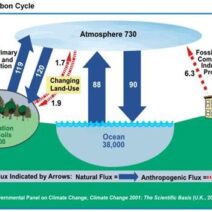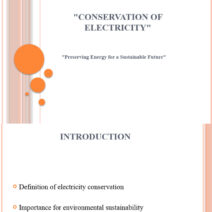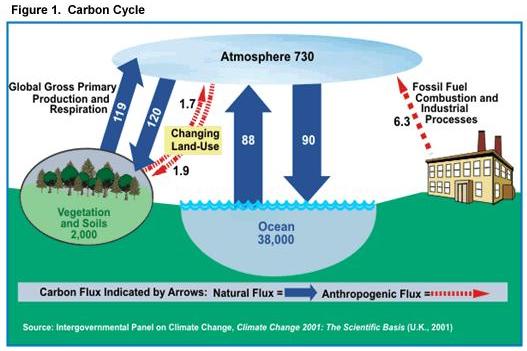Globalization, often heralded for its capacity to foster economic interconnectivity, has unwittingly perpetuated profound ecological dilemmas. As countries engage in the intricate web of international trade, the ramifications extend beyond economic prosperity, deeply affecting the environment, notably contributing to climate change. This exploration delves into how global trade habits exacerbate climate issues, illuminating the underlying mechanisms that drive this phenomenon.
At its core, globalization accelerates the production and distribution of goods across vast geographical expanses. This interconnectedness, while beneficial in terms of economic growth, necessitates extensive transportation systems. The substantial carbon emissions generated from moving products across oceans and continents contribute significantly to the greenhouse gas concentrations in the atmosphere. Notably, large cargo ships, which transport goods for numerous multinational corporations, release vast quantities of carbon dioxide, sulfur oxides, and nitrogen oxides. As these emissions accumulate, they significantly enhance the greenhouse effect, further exacerbating global warming.
Furthermore, the reliance on fossil fuels in the manufacturing and shipping processes cannot be overlooked. Many industries depend on coal, oil, and gas for energy, perpetuating a cycle that prioritizes short-term profits over long-term sustainability. The extraction and utilization of these non-renewable resources not only jeopardize the climate but also deplete vital ecosystems. Deforestation for palm oil plantations or mining operations often occurs with little regard for environmental impact, culminating in biodiversity loss and habitat destruction, which are intrinsically linked to climate change.
Moreover, the disparity in environmental regulations between developed and developing nations exemplifies the inequitable nature of global trade. Many multinational corporations exploit lax regulations in developing countries to minimize production costs, resulting in heightened emissions and pollution. Industries relocating to areas with fewer environmental safeguards can lead to increased degradation of local ecosystems, affecting not only wildlife but also the health and livelihoods of local communities. This inequity highlights the direct correlation between globalization and environmental degradation, illustrating how trade practices can be intrinsically misaligned with sustainable development principles.
In juxtaposition to the exploitation-driven aspects of globalization, consumer behavior also plays a pivotal role in driving the environmental crisis. The demand for rapid consumption encourages a throwaway culture, whereby products are designed for short lifespan rather than durability. This consumeristic mentality fuels overproduction, consequently leading to more waste, energy consumption, and resource depletion. It is common today for goods to be manufactured in one country, assembled in another, and sold worldwide. Such practices not only complicate supply chains but also exacerbate the carbon footprint associated with production.
The intricate tapestry of trade agreements further complicates the landscape. While they are often fashioned with the intent of economic gain, many inadvertently encourage environmentally harmful practices. For instance, trade policies that prioritize agricultural exports can lead to overfarming, deforestation, and the excessive use of chemical fertilizers, which, in turn, contribute to greenhouse gas emissions. Moreover, the focus on competitive pricing can lead to the neglect of environmental considerations, creating a paradox where economic growth comes at a substantial ecological cost.
Furthermore, the concept of “trade-related climate damages” has emerged as a critical area of concern. This encompasses the notion that damages incurred from climate change—whether it be extreme weather, rising sea levels, or disrupted agricultural systems—are often disproportionately borne by those who contribute the least to greenhouse gas emissions. Countries with lower emissions often lack the resources to cope with the repercussions of climate-induced disasters, placing an unfair burden on economically disadvantaged populations.
Yet, amidst the somber realities of globalization’s impact on climate change, there exist pathways to mitigate these challenges. Prominent among these is the potential for a paradigm shift towards sustainable practices. Stakeholders in globalization—from governments to consumers—can champion eco-friendly trade practices. This entails prioritizing local products, adopting circular economic models, and investing in renewable energy sources to power production and transportation systems.
Education and awareness also play crucial roles in catalyzing change. By cultivating a deeper understanding of the environmental ramifications of consumer choices, individuals can make more informed decisions that align with sustainable practices. Grassroots movements advocating for climate-friendly policies can pressure governments to enact legislation that holds corporations accountable for their environmental impact, fostering a shift towards sustainable global trade.
In summary, while globalization undoubtedly facilitates economic growth, it carries significant weighty implications for climate change. The intertwining of global trade with environmental degradation reflects a systemic issue that demands immediate attention. By recognizing the interdependencies between global trade practices and climate change, society has the opportunity to pivot towards more sustainable models that nurture both the economy and the environment. It is essential to cultivate a collective consciousness that prioritizes ecological balance, ensuring that future generations inherit a livable planet, free from the shackles of climate devastation.






